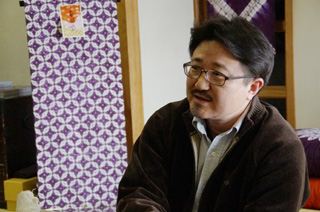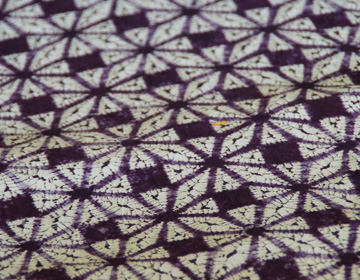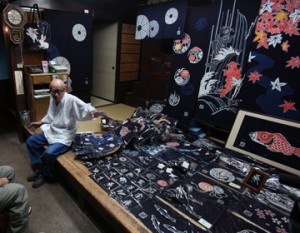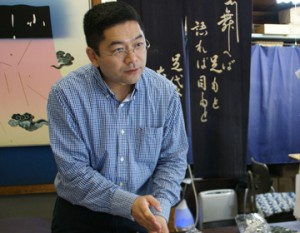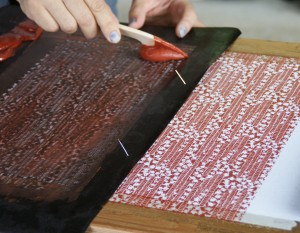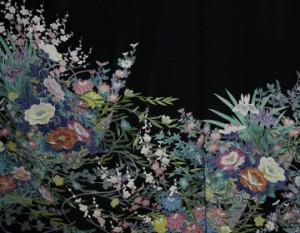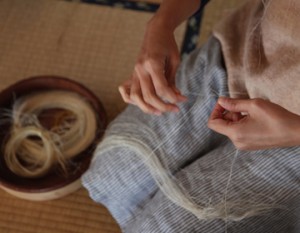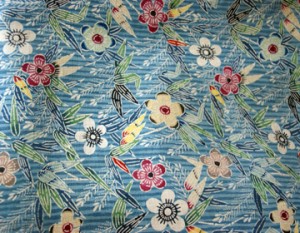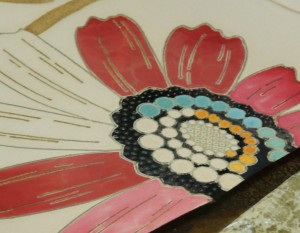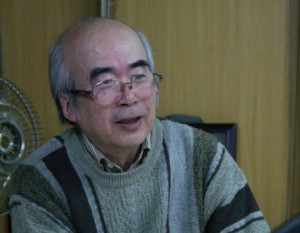Revival of Nambu Shikon zome
Have you ever heard of Nambu Shikon (Purple root) zome? As the name suggests, it is a skill of dyeing with dyes made from the ”murasaki” plant with purple roots which bloom with white flowers in the early summer. The skill was conveyed to the Nambu area during the Kamakura period. After that it was protected by the Nambu Clan and was used to produce many ”kimono” and ”kosode”. This skill lost popularity during the Meiji Era, and at one time people who had this traditional knowledge completely disappeared in the Morioka area.
However during the Taisho Era there was a movement of reviving Nambu Shikon zome. They invited engineers who knew ”murasaki” dyeing from Akita Prefecture and learned their skills. At the same time, they developed their own skills through own research. Ken Fujita, first generation owner of Soshido, where we visited, was the chief engineer of the research institute at that time.
We met and spoke with the 3rd generation, Shigeki Fujita. Since Japanese native ”murasaki” plant is now an endangered species, they cultivate their own. So it is really difficult to get hold of high quality ”murasaki”. They are in need of further research and incorporating chemical knowledge as well.
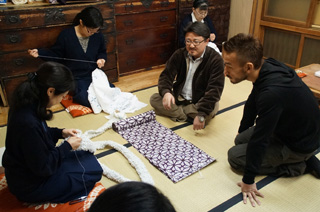
Beautiful “shibori” pattern and the shade
One of the characteristics of ”shikon zome” is the different shades of color. Botanical dyeing requires repeated dyeing, so there will be some unevenness with shades that create special beauty. Also they dye after processing using a ”shibori technique” called ”Nambu Shibori” so each piece is unique. That is also a feature that adds value. The color changes little by little over the years and the shades become more beautiful.
At the workshop, we watched the ”shibori” process. First they draw a pattern on fabric using a paper pattern. There are over 800 different paper patterns, including some from old times.
Based on the paper pattern, they sew with a thread and tie each one. This is called ”shibori”. The part that is tied with thread will not get any color. So after it has been dyed, there will be a clear pattern within the brilliant color.
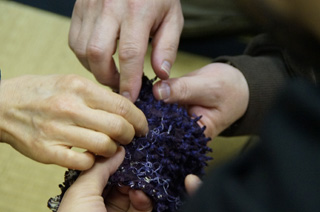
What we think is best
The process of dyeing and the process of ”shibori” both take a lot of time. We asked what they aim to achieve and they replied, ”We want to create what we think is best.”
”Of course sometimes it will not be accepted by the customers. But first, we need to be satisfied ourselves. Only then can we make our customers understand the things that we created. There are many people who understand us and became fans. That’s the kind of thing we look for.” said Fujita.
”Young people can wear it. And you can enjoy it when you get a little older. There are some people who want another one after they get even older.”
Each piece of Nambu Shikon zome has a different expression. The beautiful pattern of ”Nambu shibori” will never get old. We were able to encounter yet another charming ”kimono” culture.
